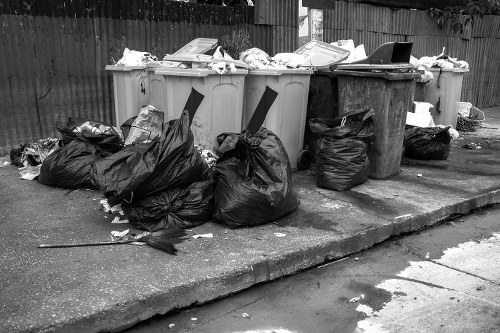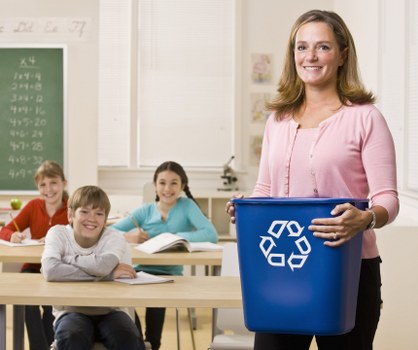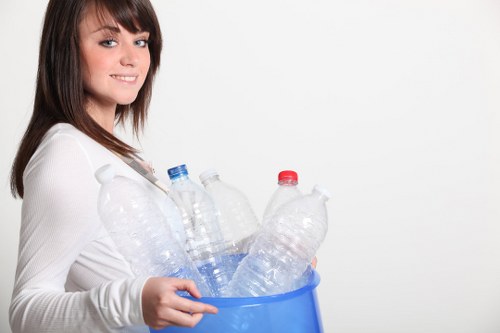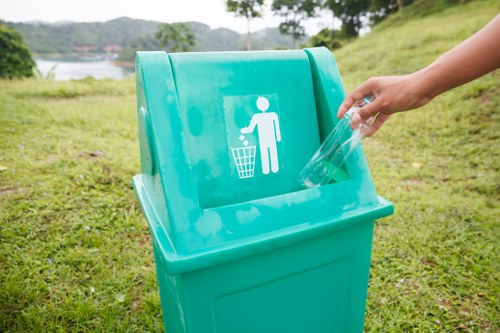Bulky Waste Collection in White Goods Recycle

Proper disposal of bulky waste, especially white goods, is essential for environmental sustainability and public health. White goods, such as refrigerators, washing machines, and televisions, often contain hazardous materials and valuable recyclable components. Efficient bulky waste collection in white goods recycle programs ensures that these items are handled responsibly, minimizing their impact on the environment.
Bulky waste refers to large household items that are not typically collected during regular curbside trash pickups. These items require special handling due to their size, weight, and potential environmental hazards. White goods fall under this category, and their proper disposal is crucial to prevent pollution and promote recycling.
Recycling white goods not only conserves natural resources but also reduces the amount of waste sent to landfills. By extracting and reusing materials such as metals, plastics, and glass, recycling initiatives contribute to a circular economy where products are reused and recycled, minimizing the need for new raw materials.

The Importance of Bulky Waste Collection
Bulky waste collection plays a pivotal role in waste management systems. Effective collection ensures that large items are removed from households and businesses promptly and safely. Without proper collection services, bulky waste can accumulate, leading to unsightly environments and posing health risks.
One of the primary benefits of bulky waste collection is the prevention of illegal dumping. When residents lack access to convenient disposal options, they may resort to discarding items in unauthorized areas, contributing to environmental degradation and community blight.
Moreover, bulky waste collection supports public health by removing items that could become breeding grounds for pests or harbor harmful substances. Timely and regulated collection helps maintain clean and safe neighborhoods.

White Goods: Definition and Examples
White goods are large household appliances that are typically used for routine housekeeping tasks. Common examples include:
- Refrigerators
- Freezers
- Washing machines
- Dryers
- Dishwashers
- Air conditioners
These appliances are integral to modern living but can become burdensome when they reach the end of their lifecycle. Ensuring their proper disposal is essential to prevent environmental harm and recover valuable materials.

Environmental Impact of Improper Disposal
Improper disposal of white goods can have severe environmental consequences. These appliances often contain materials such as:
- Refrigerants (e.g., CFCs, HCFCs)
- Metals (e.g., steel, aluminum)
- Plastics
- Glass
- Electronic components
Refrigerants are particularly harmful as they can deplete the ozone layer and contribute to global warming if released into the atmosphere. Metals extraction from landfills also leads to soil and water contamination, posing threats to ecosystems and human health.
Electronics within white goods may contain hazardous substances like lead and mercury, which can leach into the environment if not handled correctly.

Recycling Process for White Goods
The recycling process for white goods involves several stages to ensure materials are recovered efficiently:
- Collection: Bulky waste collection services gather white goods from various sources, including households, businesses, and recycling centers.
- Transportation: The collected items are transported to recycling facilities equipped to handle large appliances.
- Disassembly: At the facility, white goods are disassembled into their constituent parts. This step involves separating metals, plastics, glass, and electronic components.
- Material Recovery: Recyclable materials are processed and prepared for reintroduction into manufacturing cycles. Metals are melted and purified, plastics are shredded and sorted, and glass is cleaned and crushed.
- Hazardous Material Handling: Any remaining hazardous materials, such as refrigerants or batteries, are treated and disposed of in accordance with environmental regulations.

Benefits of Recycling White Goods
Recycling white goods offers numerous advantages, including:
- Resource Conservation: Recycling reduces the need for extracting raw materials, conserving natural resources like metals and plastics.
- Energy Savings: Producing materials from recycled sources generally requires less energy compared to manufacturing from virgin materials.
- Waste Reduction: By diverting white goods from landfills, recycling helps decrease overall waste volume and extends landfill lifespans.
- Economic Growth: The recycling industry creates jobs and stimulates economic activity through material processing and manufacturing.
- Environmental Protection: Proper recycling minimizes pollution, prevents soil and water contamination, and reduces greenhouse gas emissions.
These benefits highlight the importance of robust recycling programs and proactive participation from communities and businesses.

Challenges in Bulky Waste Collection
Despite its benefits, bulky waste collection faces several challenges:
- Logistical Issues: Collecting and transporting large items requires specialized vehicles and infrastructure, which can be costly and complex to manage.
- Regulatory Compliance: Ensuring that all collected items are processed in accordance with environmental laws and regulations adds another layer of complexity.
- Public Awareness: Educating the public about the importance of proper disposal and recycling is essential, yet often lacking.
- Economic Viability: The costs associated with collection, transportation, and processing can make bulky waste recycling financially challenging without adequate funding or incentives.
- Technological Limitations: Advanced recycling technologies are required to efficiently and safely process white goods, which may not be available in all regions.
Addressing these challenges requires coordinated efforts between governments, businesses, and communities to develop sustainable and efficient systems.

Strategies for Effective Bulky Waste Collection
Implementing effective strategies can enhance bulky waste collection and recycling processes:
- Scheduled Pickups: Offering regular and predictable pickup schedules encourages residents to dispose of bulky items responsibly.
- Collection Points: Establishing designated collection centers provides convenient drop-off locations for bulky waste.
- Incentive Programs: Providing incentives, such as discounts or rebates, motivates participation in recycling programs.
- Public Education Campaigns: Raising awareness about the benefits of recycling and proper disposal methods fosters community support.
- Partnerships: Collaborating with manufacturers, retailers, and recyclers can streamline collection and processing efforts.
These strategies contribute to a more efficient and effective bulky waste management system, promoting higher recycling rates and reducing environmental impact.

Role of Technology in White Goods Recycling
Advancements in technology have significantly enhanced the recycling of white goods:
- Automated Sorting Systems: Utilizing robotics and AI to sort materials increases efficiency and accuracy in recycling facilities.
- Advanced Material Recovery: Innovative technologies enable the extraction of rare and valuable materials from white goods, improving economic viability.
- Tracking and Monitoring: Implementing tracking systems ensures transparency and accountability throughout the recycling process.
- Eco-friendly Processing Techniques: Developing environmentally friendly methods for material separation and processing minimizes harm to the environment.
- Digital Platforms: Online platforms facilitate scheduling pickups, tracking orders, and managing recycling logistics, enhancing user experience.
Embracing these technological advancements can address many challenges in bulky waste collection and white goods recycling, leading to more sustainable outcomes.

Regulatory Framework for White Goods Recycling
Governments play a crucial role in regulating the recycling of white goods through legislation and policies:
- Extended Producer Responsibility (EPR): EPR policies require manufacturers to take responsibility for the end-of-life management of their products, incentivizing the design of more sustainable and easily recyclable appliances.
- Environmental Standards: Setting strict standards for the disposal and recycling processes ensures that environmental impacts are minimized.
- Incentives and Subsidies: Providing financial incentives to recycling businesses and consumers encourages participation and investment in recycling infrastructure.
- Ban on Illegal Dumping: Enforcing penalties for illegal disposal discourages non-compliance and promotes proper waste management practices.
- Public Reporting and Transparency: Mandating reporting on recycling rates and environmental impacts fosters accountability and continuous improvement.
These regulatory measures are essential in creating an environment that supports effective bulky waste collection and white goods recycling.

Community Involvement and Education
Engaging communities is vital for the success of bulky waste collection and recycling programs:
- Educational Workshops: Hosting workshops educates the public on the importance of recycling and the proper methods for disposing of white goods.
- Community Events: Organizing events such as recycling drives and awareness campaigns fosters a culture of sustainability.
- Volunteer Programs: Encouraging volunteer participation in recycling initiatives builds community ownership and support.
- Information Dissemination: Providing clear information through various channels, including social media, pamphlets, and websites, ensures that residents are informed about available services.
- Feedback Mechanisms: Implementing systems for collecting and addressing community feedback improves program effectiveness and responsiveness.
Active community involvement enhances the efficiency and reach of bulky waste collection efforts, leading to higher recycling rates and greater environmental benefits.

Economic Implications of Recycling White Goods
Recycling white goods has significant economic implications:
- Job Creation: The recycling sector creates jobs in collection, processing, and material manufacturing, contributing to economic growth.
- Cost Savings: Recycling reduces the need for raw material extraction and processing, leading to cost savings for manufacturers and consumers.
- Market Development: Developing markets for recycled materials stimulates innovation and investment in sustainable technologies.
- Revenue Generation: Selling recovered materials generates revenue that can be reinvested into recycling infrastructure and programs.
- Waste Management Efficiency: Effective recycling reduces the burden on waste management systems, lowering operational costs.
These economic benefits highlight the value of investing in robust white goods recycling programs.

Sustainability and Future of Bulky Waste Collection
The future of bulky waste collection in white goods recycle is closely tied to sustainability goals:
- Circular Economy: Transitioning to a circular economy model emphasizes the reuse and recycling of materials, reducing waste and promoting sustainability.
- Innovative Recycling Technologies: Continued advancements in technology will improve the efficiency and effectiveness of recycling processes.
- Policy Enhancements: Strengthening regulations and policies will support more comprehensive and sustainable recycling initiatives.
- Consumer Behavior: Shifting consumer attitudes towards sustainability and responsible disposal practices will drive higher participation rates.
- Collaboration: Enhanced collaboration between stakeholders, including governments, businesses, and communities, will foster integrated and sustainable recycling systems.
By focusing on these areas, bulky waste collection and white goods recycling can significantly contribute to environmental preservation and sustainable development.

Technological Innovations in White Goods Recycling
Technological innovations are pivotal in advancing white goods recycling:
- Artificial Intelligence: AI assists in sorting and categorizing materials, increasing accuracy and reducing human error.
- Robotics: Robotics streamline the disassembly process, handling tasks that are dangerous or tedious for humans.
- Chemical Recycling: Developing chemical methods to break down complex materials facilitates the recovery of high-purity components.
- Blockchain Technology: Blockchain enhances traceability and transparency in the recycling supply chain, ensuring accountability and reducing fraud.
- 3D Printing: Utilizing recycled materials in 3D printing promotes the regeneration of products and parts, extending material lifecycles.
These technological advancements not only improve the efficiency of recycling processes but also open new avenues for sustainable material management.

Best Practices for Bulky Waste Collection
Implementing best practices ensures the effectiveness of bulky waste collection programs:
- Clear Guidelines: Establishing and communicating clear guidelines for what constitutes bulky waste and how to prepare items for collection.
- Efficient Scheduling: Coordinating pickups to minimize wait times and optimize resource allocation.
- Proper Training: Training staff in safe handling, disassembly, and recycling procedures to maintain high standards of operation.
- Quality Control: Regular inspections and quality checks to ensure that collected items meet recycling criteria.
- Sustainable Practices: Prioritizing environmentally friendly methods in all aspects of the collection and recycling process.
Adhering to these best practices enhances the reliability and sustainability of bulky waste collection services.

Case Studies: Successful White Goods Recycling Programs
Several municipalities have implemented successful white goods recycling programs that serve as models:
Case Study 1: Green City Recycling Initiative
Green City launched a comprehensive bulky waste collection program that includes scheduled pickups, dedicated recycling centers, and extensive public education campaigns. The initiative resulted in a 40% increase in white goods recycling rates within two years.
Key Features:
- Automated scheduling system
- Partnerships with local businesses
- Incentive programs for participants
Case Study 2: Sustainable Town's Circular Economy Approach
Sustainable Town adopted a circular economy framework, focusing on recovering valuable materials from white goods and reintegrating them into the manufacturing process. This approach reduced landfill waste by 50% and created new job opportunities in the recycling sector.
Key Features:
- Advanced material recovery facilities
- Collaboration with manufacturers
- Community engagement programs
Case Study 3: EcoVille's Technology-Driven Recycling
EcoVille implemented cutting-edge technologies, including AI-powered sorting systems and blockchain for tracking recycled materials. These innovations enhanced efficiency and transparency, leading to higher participation rates and better resource management.
Key Features:
- AI and robotics integration
- Transparent tracking systems
- Educational workshops and seminars

Future Trends in White Goods Recycling
The landscape of white goods recycling is continually evolving, with several emerging trends shaping its future:
- Enhanced Material Efficiency: Designing appliances for easier disassembly and material separation to streamline the recycling process.
- Integration of IoT: Utilizing Internet of Things (IoT) devices to monitor appliance usage and predict end-of-life, facilitating timely recycling interventions.
- Biodegradable Components: Developing components that can decompose naturally, reducing environmental impact.
- Global Recycling Networks: Creating international networks for material exchange and recycling best practices sharing.
- Consumer Empowerment: Providing tools and resources for consumers to track and manage their appliance lifecycle and recycling options.
These trends indicate a move towards more sustainable, efficient, and technologically integrated white goods recycling systems.

Conclusion
Bulky waste collection in white goods recycle is a critical component of sustainable waste management. Proper disposal and recycling of large household appliances not only mitigate environmental risks but also promote resource conservation and economic growth. Despite the challenges, implementing effective strategies, embracing technological innovations, and fostering community involvement can significantly enhance the efficiency and impact of recycling programs.
As society continues to prioritize sustainability, robust bulky waste collection systems will play an increasingly important role in achieving environmental goals and fostering a circular economy. Individuals, businesses, and governments must collaborate to ensure that white goods are recycled responsibly, paving the way for a cleaner and more sustainable future.
Contact us today to learn more about our white goods recycling services and how you can contribute to a sustainable environment.